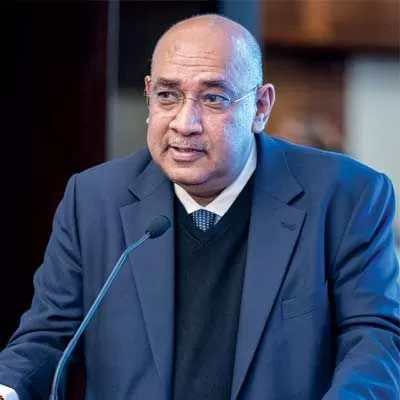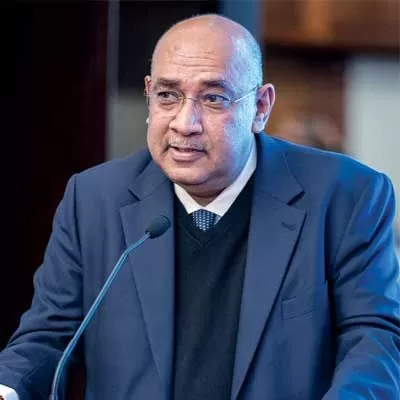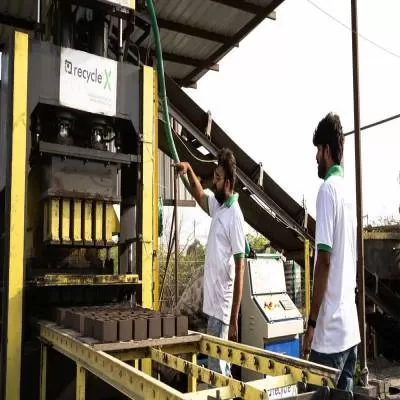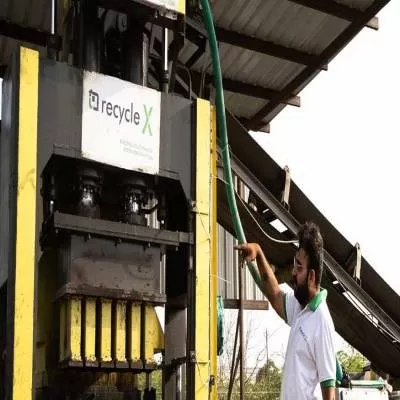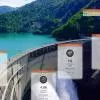- Home
- Infrastructure Urban
- ECONOMY & POLICY
- Once the supply side fixes are made, bank financing will follow.
Once the supply side fixes are made, bank financing will follow.
While the government appears to be on a fast track with its recent efforts towards approving the Rs 1.83 trillion worth of infrastructure projects, banks and NBFCs continue to find it difficult to mitigate the unknown risks such as regulatory clearances, land acquisition and coal supply. "Infrastructure is a long term story and the key to unlocking potential in this sector rests on the government's ability to address supply side constraints," affirms Ajay Gupta, Head-Infrastructure Finance, Investment Banking, HDFC Bank.
A former civil servant and an infrastructure finance banker, Gupta highlights the challenges faced by banks and shares some recommendations in conversation with SHRIYAL SETHUMADHAVAN.
How would you comment on your current project finance portfolio?
Project finance practice is housed within the Bank's Investment Banking Division, which became active about two years ago. We do not have a large portfolio of PF assets as our primary focus is on delivering structured and innovative solutions for inherently bankable assets of promoters who have a good credit track record. In the last one year, we have lead-arranged and underwritten a few market making transactions including one for a large operating toll road of a leading infrastructure developer in the country.
Tell us about the support you have offered to important projects.
The Investment Banking team is delivering a range of debt, equity and advisory solutions to the clients depending on the specific assignments. Our primary focus is on bringing about efficiencies in the capital structures of operating assets through sound structuring and underwriting for projects with high certainty and stability of cash flows. The recent refinancing structure executed by the bank for an operating toll road brought in such efficiency by reducing pricing for the senior debt and replacing the promoter sub debt with bank debt. The structure also enables issuance of a partially credit-enhanced bond a small yet significant step towards development of bond markets for operating infrastructure assets in the country. Our support to projects, therefore, comes primarily through intellectual capital with the financial capital to back it up in the form of lead arranger and underwriter mandates.
Which sector would you refrain from lending?
Financing is a simple business as long as one sticks to the fundamentals of credit underwriting. Ultimately, the business is not only about providing financing but also about getting the money back. Each transaction has to be viewed in the backdrop of its fundamentals. Go or no-go generalisations are, therefore, difficult to make. Having said this, regulatory clearances, coal availability and coal logistics are important sector issues in thermal power that need to be addressed. These factors can lead to execution delays and suboptimal performance during the operating period. Hence, we have found it difficult to finance stand-alone power projects. Another sector, which has not really evolved to the level it should have, is ports. The issues are similar construction risk, inadequate dredging, environment clearance, etc.
What has been the impact of the recent depreciation of the rupee on HDFC's lender profile?
We primarily focus on transactions where there is no mismatch between a project's cash flow and its liabilities. Most projects that we deal with have INR revenues and as such we stay away from financing projects that have un-hedged currency risks.
How has the shortage of funds impacted projects?
The banking system is currently dealing with tight liquidity conditions. However, in the long run, I do not believe that there is any shortage of debt financing for projects with good fundamentals and required approvals. What is impacting the projects is not really the shortage of debt financing but the ability of the developers to execute these projects given the supply side issues. The success of the Indian infrastructure story will actually depend upon the government's ability to ease supply side bottlenecks and the ability of the promoters to raise equity capital.
What are the challenges faced by lenders, and what are your recommendations for reform for a way out of the crisis?
A single window for all key approvals for any new project will be a big step towards easing execution headaches for developers. This will also allow a bank to focus on the fundamentals of a project rather than worry about the regulatory unknowns. For example, for a 30-storey building in Mumbai, all approvals are not given up-front.
The developer completes a few floors and then waits for approval for the remaining ones. Financing of such projects where the project viability does not work unless the entire project is completed is therefore fraught with risks that are beyond a reasonable control of the developer.
These uncertainties can be removed through transparency and certainty in the process of granting regulatory clearances before a project begins execution.
What is HDFC's performance in the case of recoveries or level of non-performing assets?
Since we have started recently and our primary focus is on underwriting good operating assets, this issue does not relate to our portfolio.
While the Government's main priority is infrastructure to achieve growth targets, the sector is hamstrung by several issues. In such a scenario, what measures do banks take?
Banks are custodians of public money and hence they need to fund only bankable assets. The country needs infrastructure and it has to make its own efforts to build it.
The question is: where is the facilitating environment today? How many new roads have been made even for a city like Mumbai and how much decongestion has happened?
There is a need for action in this direction and it should start with the creation of a transparent, enabling environment that encourages investment in a sector that requires long term, patient capital and is not easy to finance. Demand in the Indian infrastructure sector existed yesterday. Once the supply side fixes are made, bank financing will follow.
Ajay Gupta, Head-Infrastructure Finance, Investment Banking, HDFC Bank While the government appears to be on a fast track with its recent efforts towards approving the Rs 1.83 trillion worth of infrastructure projects, banks and NBFCs continue to find it difficult to mitigate the unknown risks such as regulatory clearances, land acquisition and coal supply. "Infrastructure is a long term story and the key to unlocking potential in this sector rests on the government's ability to address supply side constraints," affirms Ajay Gupta, Head-Infrastructure Finance, Investment Banking, HDFC Bank. A former civil servant and an infrastructure finance banker, Gupta highlights the challenges faced by banks and shares some recommendations in conversation with SHRIYAL SETHUMADHAVAN. How would you comment on your current project finance portfolio? Project finance practice is housed within the Bank's Investment Banking Division, which became active about two years ago. We do not have a large portfolio of PF assets as our primary focus is on delivering structured and innovative solutions for inherently bankable assets of promoters who have a good credit track record. In the last one year, we have lead-arranged and underwritten a few market making transactions including one for a large operating toll road of a leading infrastructure developer in the country. Tell us about the support you have offered to important projects. The Investment Banking team is delivering a range of debt, equity and advisory solutions to the clients depending on the specific assignments. Our primary focus is on bringing about efficiencies in the capital structures of operating assets through sound structuring and underwriting for projects with high certainty and stability of cash flows. The recent refinancing structure executed by the bank for an operating toll road brought in such efficiency by reducing pricing for the senior debt and replacing the promoter sub debt with bank debt. The structure also enables issuance of a partially credit-enhanced bond a small yet significant step towards development of bond markets for operating infrastructure assets in the country. Our support to projects, therefore, comes primarily through intellectual capital with the financial capital to back it up in the form of lead arranger and underwriter mandates. Which sector would you refrain from lending? Financing is a simple business as long as one sticks to the fundamentals of credit underwriting. Ultimately, the business is not only about providing financing but also about getting the money back. Each transaction has to be viewed in the backdrop of its fundamentals. Go or no-go generalisations are, therefore, difficult to make. Having said this, regulatory clearances, coal availability and coal logistics are important sector issues in thermal power that need to be addressed. These factors can lead to execution delays and suboptimal performance during the operating period. Hence, we have found it difficult to finance stand-alone power projects. Another sector, which has not really evolved to the level it should have, is ports. The issues are similar construction risk, inadequate dredging, environment clearance, etc. What has been the impact of the recent depreciation of the rupee on HDFC's lender profile? We primarily focus on transactions where there is no mismatch between a project's cash flow and its liabilities. Most projects that we deal with have INR revenues and as such we stay away from financing projects that have un-hedged currency risks. How has the shortage of funds impacted projects? The banking system is currently dealing with tight liquidity conditions. However, in the long run, I do not believe that there is any shortage of debt financing for projects with good fundamentals and required approvals. What is impacting the projects is not really the shortage of debt financing but the ability of the developers to execute these projects given the supply side issues. The success of the Indian infrastructure story will actually depend upon the government's ability to ease supply side bottlenecks and the ability of the promoters to raise equity capital. What are the challenges faced by lenders, and what are your recommendations for reform for a way out of the crisis? A single window for all key approvals for any new project will be a big step towards easing execution headaches for developers. This will also allow a bank to focus on the fundamentals of a project rather than worry about the regulatory unknowns. For example, for a 30-storey building in Mumbai, all approvals are not given up-front. The developer completes a few floors and then waits for approval for the remaining ones. Financing of such projects where the project viability does not work unless the entire project is completed is therefore fraught with risks that are beyond a reasonable control of the developer. These uncertainties can be removed through transparency and certainty in the process of granting regulatory clearances before a project begins execution. What is HDFC's performance in the case of recoveries or level of non-performing assets? Since we have started recently and our primary focus is on underwriting good operating assets, this issue does not relate to our portfolio. While the Government's main priority is infrastructure to achieve growth targets, the sector is hamstrung by several issues. In such a scenario, what measures do banks take? Banks are custodians of public money and hence they need to fund only bankable assets. The country needs infrastructure and it has to make its own efforts to build it. The question is: where is the facilitating environment today? How many new roads have been made even for a city like Mumbai and how much decongestion has happened? There is a need for action in this direction and it should start with the creation of a transparent, enabling environment that encourages investment in a sector that requires long term, patient capital and is not easy to finance. Demand in the Indian infrastructure sector existed yesterday. Once the supply side fixes are made, bank financing will follow.


